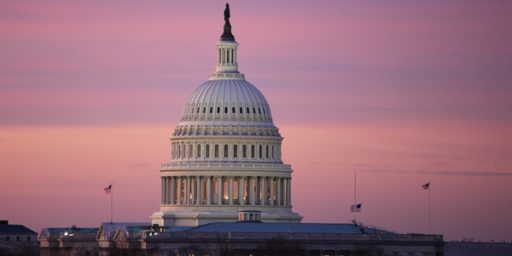Krugman, Brad DeLong and Mark Thoma vs. the CBO
Brad DeLong and Mark Thoma seem to agree with Krugman that the current fiscal problems are due solely to Bush’s tax cuts. But according to the CBO that is only part of the picture. Adding back in all the revenues lost due to the tax cuts would solve the problems with the current fiscal outlook. It would certainly help, but it sure wouldn’t get rid of the deficit.
In fairness, Thoma has noted the above CBO numbers, but gets part of it wrong, IMO.
So, a non-existent figure is used to make the point that 1.8 trillion is just a drop in the bucket? Why is the 20% figure relevant – shouldn’t it reflect actual instead of projected numbers? What am I missing?
Suppose you take out the part that forecasters missed, the 2.5 trillion from “technical adjustments and revised economic assumptions,” from the 8.1 trillion surplus. That leaves 8.5-2.5=6.0 trillion swing in the budget given the assumptions underlying the forecasts through 2011. The tax cuts are then 1.8/6.0 = 30% of the total. That’s a pretty good chunk of the swing in the budget. That spending was increased by a bit over twice that amount doesn’t reduce its magnitude.
The non-existent figure that Thoma mentions is the $5.6 trillion surplus projections at the end of Clinton’s second term. The problem with subtracting off the $2.5 trillion in faulty forecasting is a bit misleading in that most people point to the $5.6 trillion when taking Bush to task for the deficits/current fiscal outlook. So subtracting that off seems rather inappropriate. I agree that trying to paint the tax cuts as a “drop in the bucket” in terms of the impact on the current fiscal outlook is silly, but the bottom line is that the current fiscal outlook isn’t due solely to tax cuts. Increased spending, a recession, and tax cuts all played a role in creating the current fiscal outlook.






Reactions: The $5.6 trillion “surplus” was fairy dust, and remains fairy dust, so why do we pay any attention to it.
It seems to me that any use of it to load up our background when we consider the Bush tax cuts is a waste of time, and deceptive.